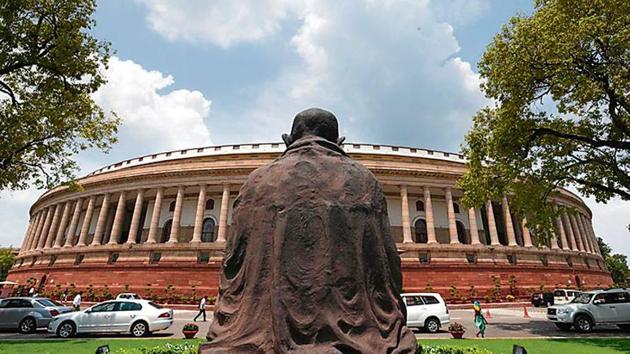Opinion | The curious case of Indian anxiety, despite optimism
Three ‘D’s — decline, decay and destruction— are prefixed to ‘institutions’ when discerning citizens speak about the three pillars or ‘estates’ of the Republic of India, the executive, the legislature and the judiciary. “Our institutions are in decline,” they say.
Three ‘D’s — decline, decay and destruction— are prefixed to ‘institutions’ when discerning citizens speak about the three pillars or ‘estates’ of the Republic of India, the executive, the legislature and the judiciary.

“Our institutions are in decline,” they say. Just look at the first pillar — the executive. Is the RBI being allowed to be what it is mandated to be?
They point to the state of our monetary stability. They ask: Is the Indian Council for Agriculture Research pulling its weight? They point to the deep distress of our farmers. Is the Indian Council for Medical Research being heard? They point to the power of the tobacco and plastic lobbies.
The Chief Information Commissioner, Chief Vigilance Commissioner, the CAG are doubtless all good administrators, they concede, but why are their names not household names as they should be? And they then point out, ruefully, to the spread, like a communicable disease, of corruption, whether in terms of ‘petty’ bribery, or large-scale graft, public sector corruption or corporate malfeasance. And the Planning Commission, they remind us, has vanished, and with it all ground-level consultation. The Niti Aayog is opacity itself. Are our autonomous academic institutions, they ask, truly autonomous?
They look then at the second pillar— the legislature. How money works in elections is a shame, they lament. If those elected are beholden to donors, will they be independent, objective? And then Parliament meets, but rarely, and when it does — utter chaos!
Somnath Chatterjee was spot-on, they say, when he declared “I hope all of you who don’t want this House to function should be defeated in the election. You have to be taught a lesson; people will give a fit verdict.” Our legislative edifice is in decay, they conclude. On the third pillar, the judiciary, they recall “Indira Gandhi systematically destroyed institutions”. The word, ‘systematically’ is stressed to show a plan, method and strategy behind what they describe as the deliberate undermining of institutions.
“She turned the higher judiciary into her durbar”. Has that made the judiciary vulnerable for all time?
Contrastively, three ‘R’s are joined to ‘institutions’ when the incorrigible optimist speaks of them, if only to persuade himself —‘robust’, ‘revered’, ‘resilient’. Governance indices and development statistics do not at all show our executive in poor light, the optimist asserts with vehemence. Is the current GDP figure not sufficient proof? And look — our space vessels soar, our trains speed like bullets, our roads are not given a moment’s respite by lorries, containers, buses, cars, motorcycles... the wheels of scientific and technological progress. On graft, he is silent. The optimist turns to the legislature and says, “Don’t forget, India gave women the right to vote from day one of the enactment of its Constitution...” And women have become MLAs, MPs, ministers, chief ministers. In fact, so strong a Prime Minister did Indira Gandhi become, that her ministers — as she herself recalled, not without satisfaction — addressed her as ‘Sir’. We do not forget.
The optimist turns to the state of our higher judiciary with confidence. It is built, he says, on solid, sound, secure foundations. He uses the Hindi word for it, ‘buland’, meaning robust. Justice AN Ray may have been appointed Chief Justice of India superseding seniors during the Emergency, and had gone on to say no citizen had any right to move court against any arbitrary action by the government, resulting in a loss of liberty or even life, but all that is history. The judiciary need fear nothing, it is just so robust, so resilient, so revered. Look at the Supreme Court’s orders that have rejected the Union of India’s pleas, petitions, prayers. Just look at the whole tranche and be glad, feel safe...
And in the judiciary, the citizen does feel a surge of faith and respect. Likewise, in our defence forces: The men in uniform protect us with their lives, allowing politicians to bask in the glory.
The citizen then asks: Why am I still anxious? And turning to the media she says she does not know if ‘Fourth Estate’ is an accurate or accepted description, but the fact is that journalists in India are resisting being targeted, threatened as also being compromised. Is the institution of the press being gobbled by fake news, concocted news regurgitated by social media?.
So, on balance, where do our institutions stand? Proud of their past, uneasy in their present and uncertain about their future, they stand on unsure feet, where faith and fear meet.
(Gopalkrishna Gandhi is distinguished professor of history and politics, Ashoka University)






